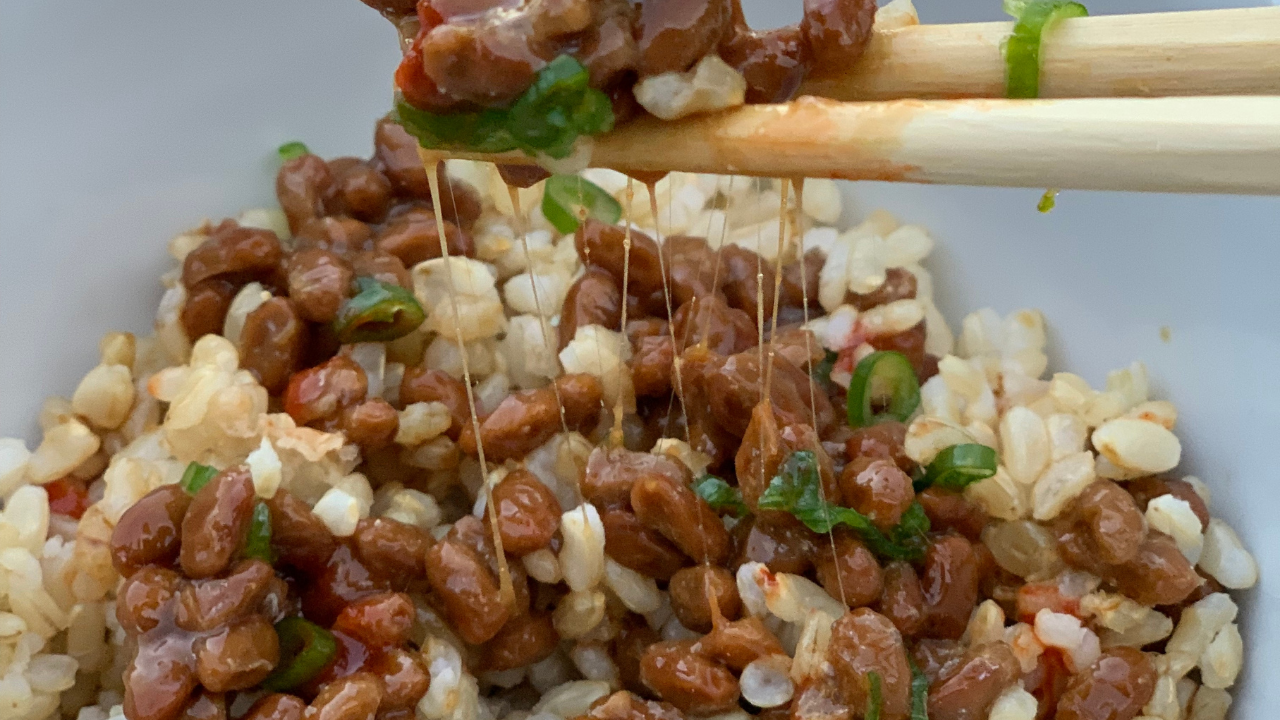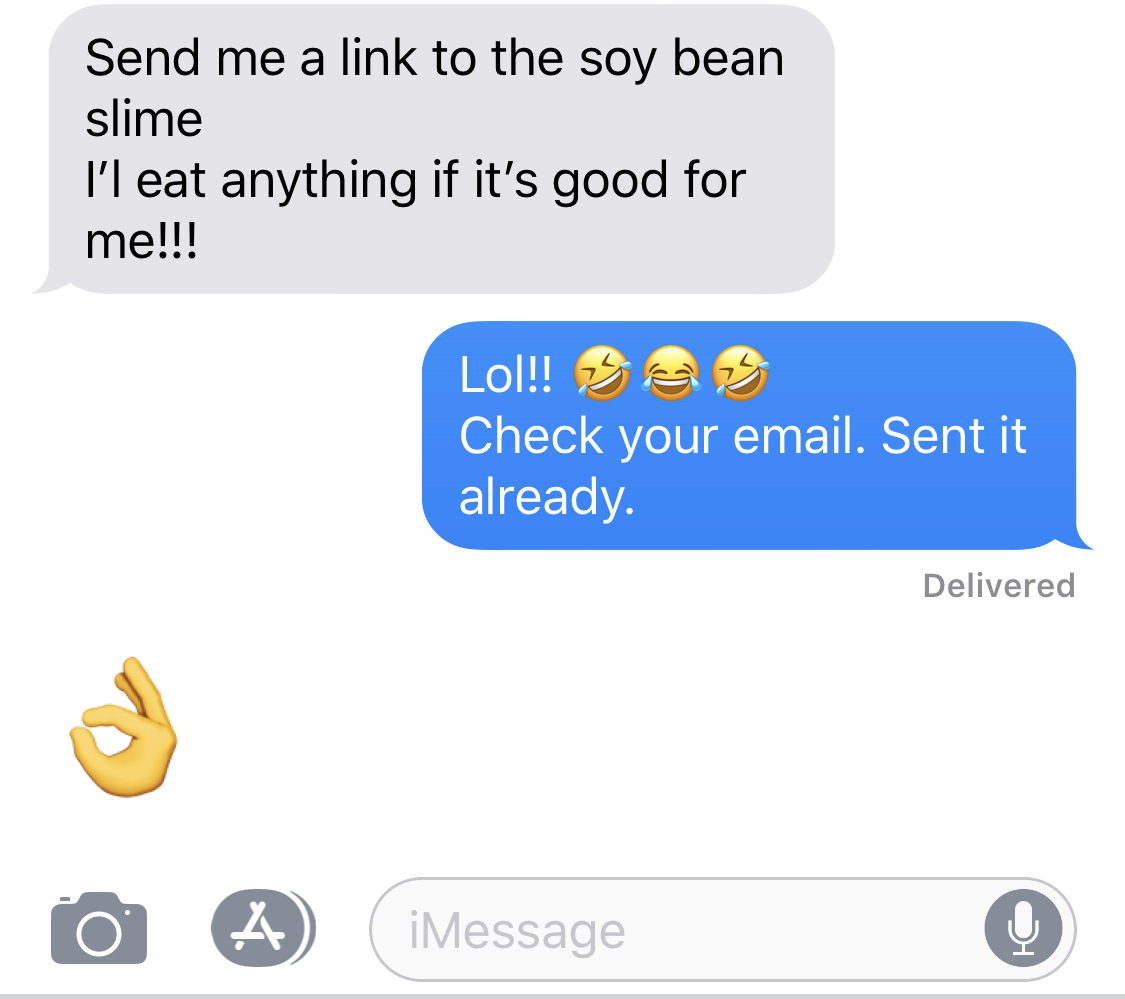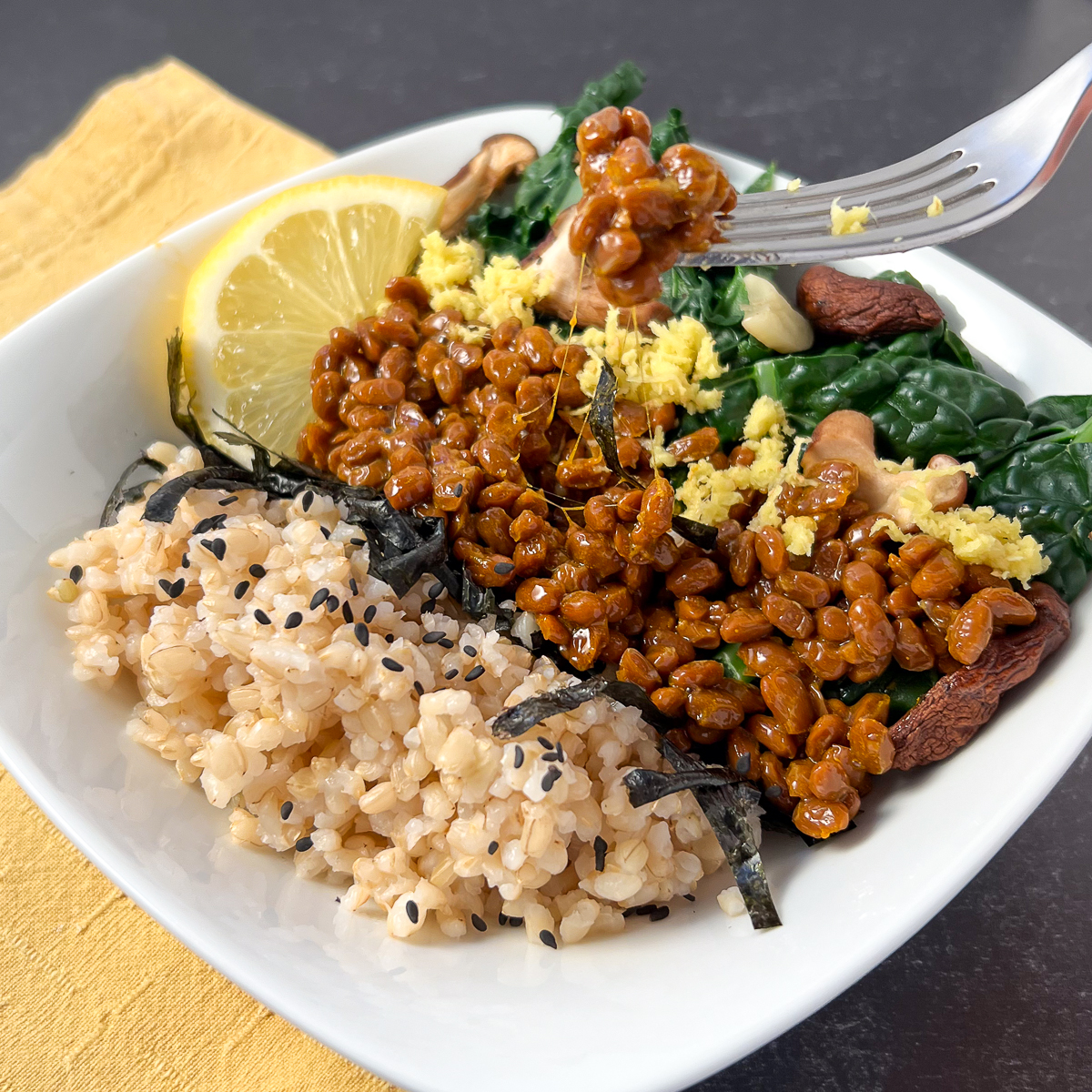How Far Will You Go to Eat Healthy?
May 04, 2022
Let me begin by saying that some people, myself included, don’t necessarily care about the taste of something.
If something is good for us and will contribute to preventing disease, we will eat it anyway. Like my friend Lydia who sent me this text:

It’s also like those early morning swims at the gym when its cold outside... you don’t want to get in the water, but you do it anyway because it's in your workout schedule and you know how great you’ll feel afterwards.
What tends to happen with food is that you acquire a taste for something that started off tasting nasty.
After repeated exposure to that food, it becomes palatable, maybe even yummy. Mushrooms, kombucha, kale, and black coffee are all examples for me.
What are yours?
In 2019, I started eating something called natto—a fermented soybean product with numerous nutritional benefits.
Natto is made by boiling soybeans and then fermenting them by introducing the bacteria Bacillus subtilis. It is then covered and remains in hot conditions for about a day so that B. subtilis eats the soybeans and forms a biofilm—like that slimy film you get on your teeth when you go all day without brushing them. This biofilm in natto is what gives it a slimy gooey texture on the soybeans.
So what does all of this have to do with combating osteoporosis and heart disease?
The plant-based superfood natto has the highest concentration of vitamin K2 of any food. Vitamin K1 is produced by plants[1], while vitamin K2 is produced by bacteria. Vitamin K2 removes calcium from the blood and gets it to the places where it’s most needed, namely the bones.
Removing calcium from the blood also lowers the risk of calcification of arteries, a contributor to heart disease.
What does natto taste like? It's funky and unpleasant at first. But as with the mushrooms, kombucha, kale, and black coffee I mentioned earlier, I acquired a taste for it after the ninth or tenth time I ate it.
Here are three interesting articles that may persuade you to try this superfood:
1. An observational study conducted in Japan looking at natto consumption, circulating levels of Vitamin K2, and prevalence of hip fractures. Researchers found a lower incidence of hip fractures among women who consumed natto on a regular basis compared with those who did not.
2. An observational study involving data from over 29,000 Japanese adults showing that high consumption of natto was associated with a reduced risk of heart disease and stroke.
3. A review article acknowledging that Vitamin K2, along with calcium and vitamin D, can improve bone density and that vitamin K absorption can be impacted by different prescription drugs and GI conditions. This article points out that natto may have inflammation-reducing benefits for people with rheumatoid arthritis, as well as inducing apoptosis, programmed cell death (which is a good thing).
I hope you give this superfood a try. Here is a recipe to help you get started: Natto Maki Bowl
[1] Highest sources of vitamin K1 are found in dark leafy green vegetables. Vitamin K1 helps our blood to coagulate so we don’t bleed to death when we get a paper cut.
Join us for the next Healthy Christian Woman Bootcamp.
Let's stay connected!
Subscribe to our email list. We love to send out healthy delicious recipes, updates on events and healthy living challenges and promotions we're running.
Of course, you can unsubscribe at any time.



